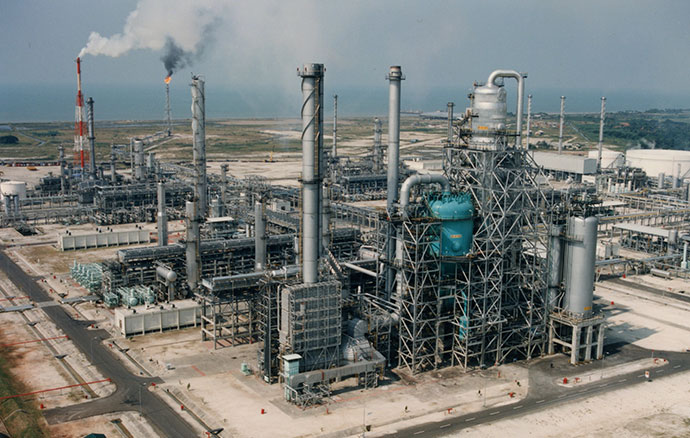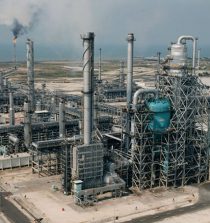By Heather Palmer, Justin Savage and Nicole Noelliste
In transactions involving petroleum refinery assets, thorough and careful due diligence is critical for identifying and quantifying environmental liabilities associated with the target asset.
In recent years, US refineries have generally outperformed their upstream counterparts in terms of profits and revenue, benefiting from low crude costs and high crack spreads. However, the Covid-19 pandemic and the associated decline in global demand for petroleum products such as aviation fuel present unique challenges to refineries.
These pressures may spur a wave of mergers, acquisitions and divestitures in the downstream sector. For those on the buy side, there may be significant bargains coming to market, allowing companies to deliver long-term value despite the market conditions. Conversely, refinery deals may carry significant downside risk, particularly with respect to environmental concerns.
To assess exposure to environmental risks and potentially resource-intensive liabilities, parties should conduct comprehensive and well-structured environmental due diligence. Environmental due diligence is an increasingly complex element of transactions involving refinery assets, due in part to the multi-faceted and evolving regulatory burden on petroleum refiners, investor demands for increased transparency on environmental, social and governance (ESG) issues as well as uncertainty regarding the outcome of the US presidential election and resultant federal policies.
When conducting environmental due diligence of petroleum refinery assets, buyers need to evaluate five main groups of considerations.

Determine the scope of environmental liabilities
In stock acquisitions, environmental liabilities generally are assumed by the buyer as a matter of law. While the buyer may potentially have a right to indemnification from the seller, the buyer essentially takes on its role for the acquired company and assumes responsibility for all pre-existing environmental conditions, regardless of fault.
In contrast, in asset sales, as a general rule, the buyer does not automatically assume the environmental liabilities of the seller unless expressly assumed. Nonetheless, because certain environmental statutes such as the Comprehensive Environmental Response, Compensation and Liability Act (CERCLA) impose liability based solely on a person’s status as a current owner or operator of a facility, an asset purchaser may still be subject to environmental claims, even if not expressly assumed in the asset purchase agreement. Consequently, the identification and quantification of suspected or known environmental liabilities through the due diligence process are essential for allocating environmental risks between the buyer and seller within the transaction.
To determine the scope of environmental liabilities, the buyer should request and review all relevant environmental information about the refinery and the business being acquired, including, but not limited to, all environmental permits issued by federal, state, and local governmental authorities; all environmental reports, such as Phase I and Phase II Environmental Site Assessments, environmental audits, and monitoring reports; and all contracts or agreements, if any, by which the company has agreed to indemnify other parties for environmental remediation, compliance costs or penalties. The buyer should also request information related to the release of hazardous substances or petroleum products at the refinery, including any off-site migration of such materials, and documents relating to any ongoing or planned remediation activities on or near the property.
Environmental due diligence is an increasingly complex element of transactions involving refinery assets
In addition, the buyer should determine whether there are any threatened or pending environmental investigations, claims or proceedings, by requesting and reviewing all notices, actions, claims, demands, proceedings, citations, requests for information, notices of violation or enforcement, and orders relating to environmental laws and hazardous or toxic materials. It is also important for the buyer to determine whether the target company has been identified as a potentially responsible party under CERCLA or similar state law.
In addition to claims brought by governmental authorities, actions may also potentially be brought by private parties under common law tort theories such as negligence, nuisance and trespass. Accordingly, buyers should also assess the relationship between the refinery and the community in which it operates to determine if material litigation risks exist, or will likely exist.
Due to the technical complexity of petroleum refineries, buyers typically retain environmental consultants to assist with environmental due diligence. Given the corresponding complexity of environmental laws and regulations applicable to refinery operations and the possibility of material environmental liabilities associated with the business, it is also important to involve environmental counsel with specific expertise in petroleum refineries early in the diligence process to assist the buyer in identifying red flags that might impact the financial viability of the transaction.
Consider requirements under federal and state consent decrees
Most refineries throughout the US have entered into consent decrees with federal and state governments. Since 2000, through its National Petroleum Refinery Initiative, the US Environmental Protection Agency (EPA) has entered into consent decrees with more than 95pc of the national petroleum refining capacity. As part of environmental due diligence, buyers should consider and analyse any consent decree requirements, as decrees typically require the new owner to become a party to the consent decree and fulfill the settlement’s requirements. Consent decree requirements often include monitoring, reporting, permitting, installation of pollution control equipment and implementation of environmental projects. Violations of consent decree requirements carry significant stipulated penalties and may require potential corrective action.
Recognise the regulatory complexity of refineries
Refineries are complex and heavily regulated assets. Entities involved in petroleum exploration, production and development must comply with comprehensive laws and regulations, related to the environment and occupational health and safety, at the local, state and federal levels. Therefore, a refinery’s operations may potentially include thousands of compliance touch points. The depth of a refinery’s compliance and regulatory landscape is dependent on a number of factors, including the location of the facility, the number and type of process units, the supply chain for crude and the types of finished products.
Major compliance points for refineries include air permitting, water permitting and potential remediation exposure, particularly for ‘emerging contaminants’ such as per- and polyfluoroalkyl substances (PFAS).
There are other lesser-known regulatory obligations at refineries including licenses required by of the US Nuclear Regulatory Commission, the Federal Aviation Administration and the Federal Communications Commission.
Violations of environmental laws and non-compliance with permits and licenses carry significant civil penalties and potential criminal liability. However, not all violations pose the same risk. Most non-compliance results in administrative agreements with regulators or other low-impact results. However, certain violations may pose material risks. Distinguishing between compliance noise and potential dealbreakers requires considered judgment and familiarity with the refinery compliance landscape.
Identify potential costs and strategies related to renewable fuel standard (RFS) requirements
Petroleum refineries that manufacture transportation fuels for use in the US must generally comply with EPA’s RFS. The RFS requires subject refineries to blend certain renewable fuels into US transportation fuels and/or purchase Renewable Identification Numbers (RINs) to comply with the annual renewable fuel volume. As a result, the current and projected prices of renewable fuels and RINs are a compliance cost that should be considered.
Additional uncertainties have been created around exemptions to the RFS. For example, there is ongoing litigation regarding the small refinery exemption that could pose risks to a buyer purchasing a small refinery.
Additional uncertainty concerning RFS includes the manner in which EPA plans to implement the RFS after 2022, when the agency might have more discretion to move past Congressionally-mandated volumetric requirements.
Proceed with caution when evaluating assets that may be inadequately resourced
When companies put refineries on the market, the asset may not receive as much capital attention in the internal beauty contests to allocate scarce resources. That is typical and not necessarily a warning sign. That said, buyers should carefully consider whether budget allocations have been so constricted that it may pose a material risk to the asset, either in compliance or other areas. There is no clear line to distinguish a good ‘fixer-upper’ from an asset that may be ‘too far gone’ to produce reliably, but careful review would be in order.
A refinery’s operations may potentially include thousands of compliance touch points
Market conditions may allow companies to unlock substantial value in refinery mergers and acquisitions. Managing potential downside risks is an important consideration in any deal. Thorough and careful environmental due diligence allows parties to consider and quantify environmental risks and liabilities associated with a transaction involving refinery assets. A well-structured due diligence process will identify conditions that affect the value of assets, and therefore, inform the negotiation and drafting of the agreement.
Source: Petroleum Economist
Heather Palmer is an environmental partner in Sidley Austin’s Houston office, while Justin Savage and Nicole Noelliste are respectively an environmental partner and associate in the firm’s Washington, DC office.
This article has been prepared for informational purposes only and does not constitute legal advice. This information is not intended to create, and the receipt of it does not constitute, a lawyer-client relationship. Readers should not act upon this without seeking advice from professional advisers. The content therein does not reflect the views of the firm.









Can you be more specific about the content of your article? After reading it, I still have some doubts. Hope you can help me. https://accounts.binance.com/sl/register-person?ref=OMM3XK51
Your writing style is so engaging and easy to follow I find myself reading through each post without even realizing I’ve reached the end
снятие ломки наркомана снятие ломки наркомана .
I seriously love your site.. Excellent colors & theme. Did you build this website yourself? Please reply back as I’m hoping to create my own personal blog and would love to find out where you got this from or what the theme is called. Cheers.
gruppe? Der er mange mennesker, som jeg tror virkelig ville
Hello there, just became aware of your blog through Google, and found that it is really informative. I am going to watch out for brussels. I will appreciate if you continue this in future. Lots of people will be benefited from your writing. Cheers!